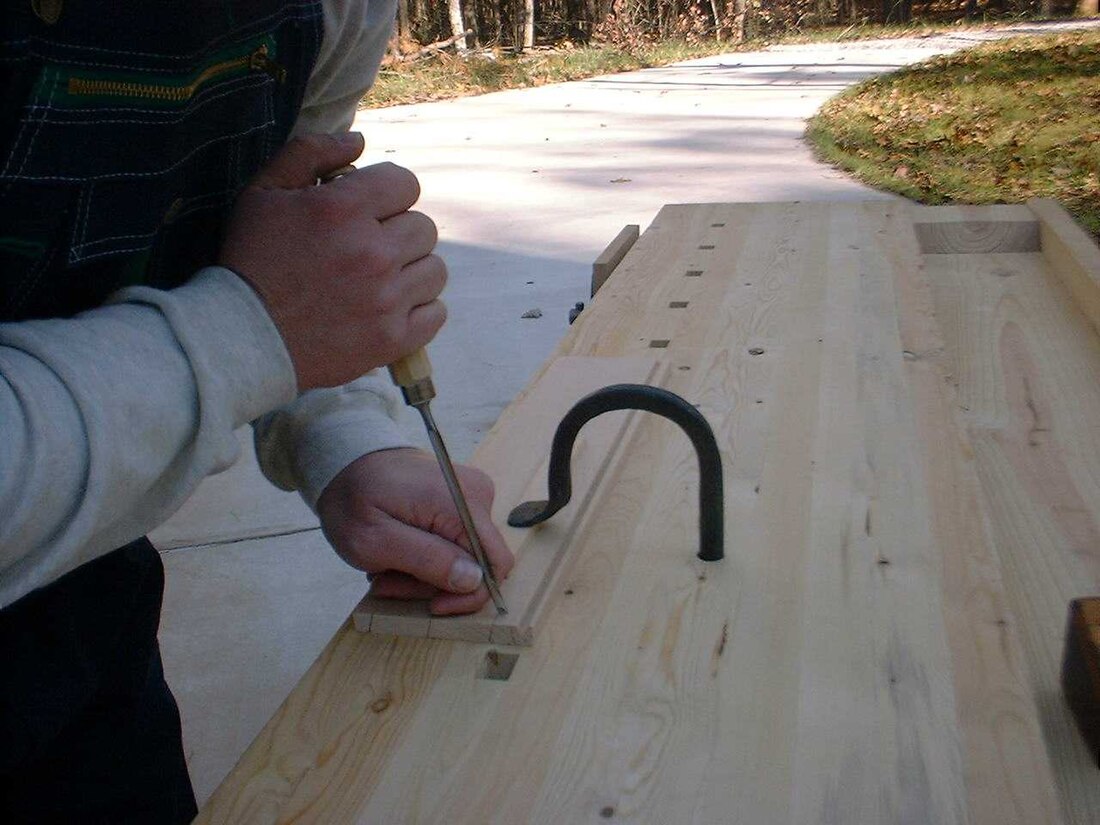Top Qs
Timeline
Chat
Perspective
Holdfast (tool)
Woodworking tool for securing a work-piece to a bench From Wikipedia, the free encyclopedia
Remove ads
A holdfast or hold fast is a form of temporary clamp used to hold a workpiece firmly to the top or side of a wooden workbench or the top of an anvil.[1]
A form of bench dog, a traditional holdfast has either a curved or flat top. Its shank is slid loosely into a “dog” hole in the bench or anvil until the tip of its hook touches the work. It is set by hitting its top with a mallet or hammer, which causes the shaft to wedge tightly against the sides of the hole. A tap of its back side near the top releases it.
Contemporary holdfasts are commonly designed to fit in 3⁄4 inch (19 mm) holes, somewhat narrower than had been traditional.[2] Scrap pieces of wood or leather are often used between the holdfast and the workpiece to prevent marring it.
An adaptation of the holdfast is threaded, sometimes known as a “screwdown”, which is tightened rather than tapped in place.[3]
Remove ads
History
Based on a fresco discovered in the ruins of Herculaneum, holdfasts are known to have been in use since at least the 1st century AD.[4] They are also described and illustrated in early European books on woodworking, such as Joseph Moxon's 1678 edition of Mechanick Exercises and André Jacob Roubo's 1774 L'Art du Menuisier.[5][6] The term has been in use since at least the 16th Century.[7] Use declined throughout the 20th century, but has seen a resurgence in recent years.[8]
While "artisan" holdfasts continue to be made as castings, or forgings, modern holdfasts are made from round mild steel bar stock using highly automated cold-working machines. Gramercy Tools makes such holdfasts from bar stock which is slightly under 3/4" (19.05mm) dia., usually 19mm for use in the now customary 3/4" bench holdfast holes. The making of such a holdfast is more particularly described in Gramercy Tools' patent document (U.S. Patent 7,571,631, to Moskowitz, et. al.).
Remove ads
Gallery
- Illustration from L'Art du Menuisier (1769) demonstrating how the holdfast is secured in the workbench hole
- Roman workbench with a holdfast, based on a 1st Century AD fresco from the ruins of Herculaneum
- Illustration of a screwed holdfast from Cassell's Carpentry and Joinery (1907)
- Illustration from L'Art du Menuisier (1769) showing a workbench with holdfasts in use
See also
References
Wikiwand - on
Seamless Wikipedia browsing. On steroids.
Remove ads





